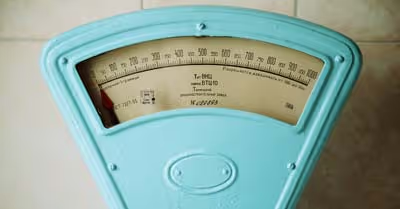Table of Contents
How Much Does a Dress Weigh?
The item's weight and dimensions are used to determine global shipping costs. Consumers need to know the weight of the products to more properly estimate shipping rates and avoid paying more for shipment.
Of course, how much a dress weighs also depends on the type of dress you're wearing. For instance, there's the wedding dress, evening dress, and the common go-to dress. Here, we'll take a look at all three options:
Everyday Dresses
Dresses are substantially more efficient in terms of time. There is just ONE option available to you. "What goes with this?" none of it. "Do I have a clean blouse to match with my skirt?" or "Do I have a clean blouse to go with my skirt?" There is only one component.
Many CEOs comment about their attire. Consider Steve Jobs and his signature black turtleneck. He had a lot of black turtlenecks and pants in his closet.
We're all busy, whether we're CEOs or not. Having a go-to source may be extremely beneficial and time-saving. Many ladies choose dresses since they are one piece, and if it fits, you won't have to look in the mirror to see whether you like it or what matches with it.
The everyday dress typically weighs between 4 to 12 ounces (0.7lbs.).
Evening Dresses
Simply described, the evening dress is the prevalent trend style for wearing in the evening. Despite its simple description, there are surprisingly complicated requirements regarding the propriety of trendy evening attire. Evening clothing is inextricably linked to current styles, with distinct traits that separate it from daily wear, regardless of the era.
An evening gown is a specific type of gown that emphasizes a woman's femininity and frequently declares her attractiveness. Necklines are low, bodices are tight, arms are bared, and skirts are opulently fashioned in general.
Reflective to matte fabric surfaces, textured to smooth fabric surfaces, and soft to stiff fabric surfaces are all available. An evening dress weighs anywhere from 4.2 ounces to 17 ounces (1.1lbs.).
Wedding Dresses
For obvious reasons, the wedding dress is usually the heaviest of all the different dress types. Whether you go with the Mermaid, Trumpet, A-line, Slip, or Ball Gown, the wedding dress typically weighs around 28 to 70 ounces (or 4.4lbs.)
Who Uses Scales to Weigh Dresses?
When manufacturing bespoke garments, tailors use scales that can measure grams per square meter (GSM) to determine the right amount of fabric correctly. Wholesalers sell raw fabric in bundles or sheets, employing a counting or check weighing scale with the necessary trade permissions for weight-based sales.
Retail or laundry scales with price-computing functions are used in laundry and dry cleaners. This allows them to calculate the cost of a customer's laundry depending on its weight. Businesses in the service industry, such as restaurants, spas, and hotels, are typical clientele.
Trade-approved platform scales with a check weighing feature are used by businesses that acquire previously owned garments by weight. This helps people figure out how much they should spend on clothes they buy from a merchant. When large platforms are required, they are employed.
When selling garments by the pound, large platforms are employed that allow numerous bags to be weighed at the same time. Consider the price and how it fits into the budget, as well as the size and amount of weighing capacity.
Those who want to purchase and sell clothes or fabric by weight should use only trade-approved scales with a big weighing platform and enough capacity to accept numerous bundles of garments at once.
Weighing Yourself with a Dress On
When weighing oneself, wearing clothing might add up to two pounds - even more, if you're wearing shoes. Again, if you constantly weigh yourself in the same outfit, this isn't a huge concern, but because our clothes change with our emotions and seasons, it's better to go without when you go on the scale.
The key to getting the greatest precision is consistency... if you don't have your own scale, make sure you're wearing the same amount of clothing each time. Try to do it at the same time every day, and if you're doing it at the gym, make sure it's either before or after your exercise; don't switch back and forth.
Recent Articles
















